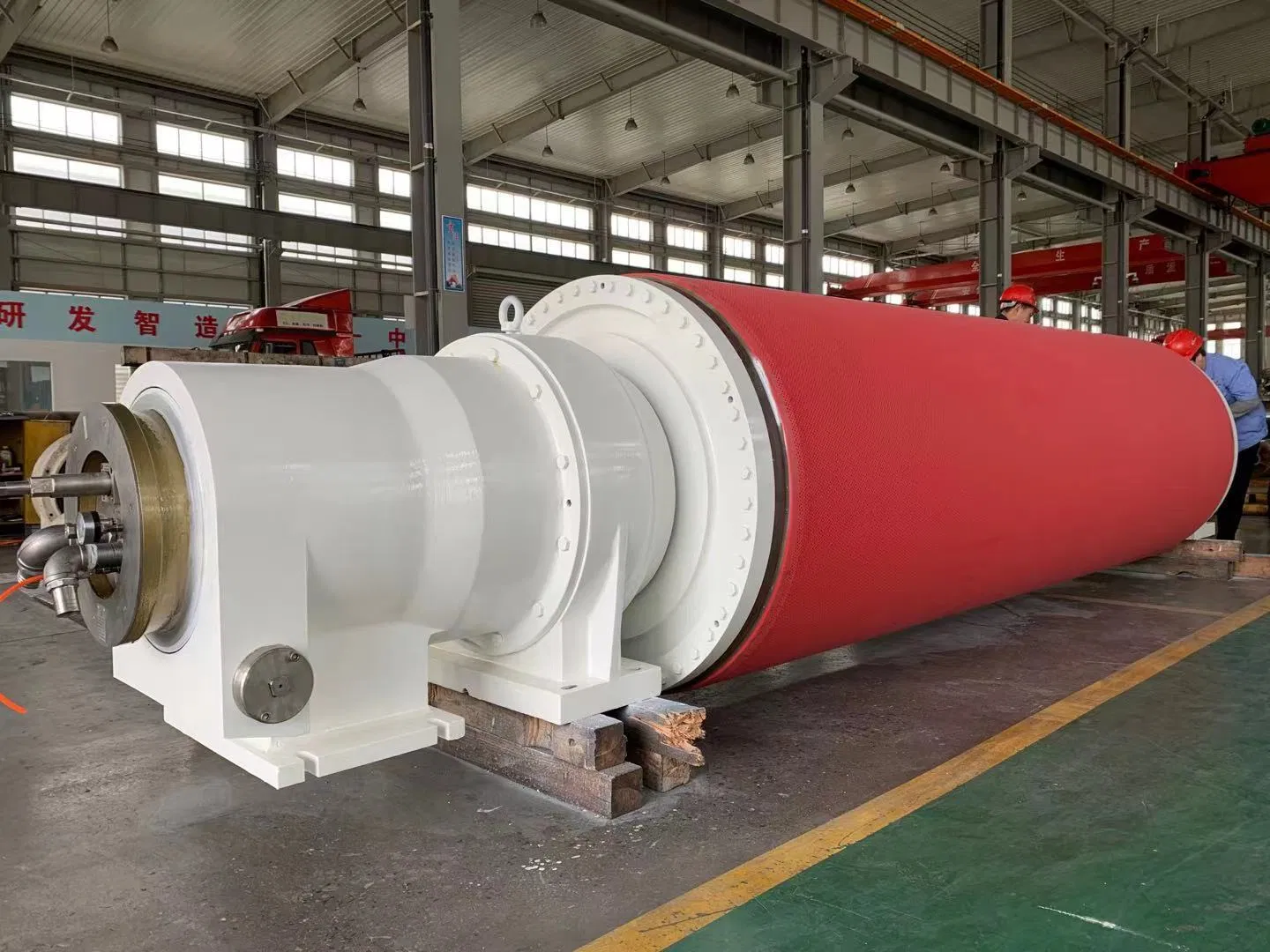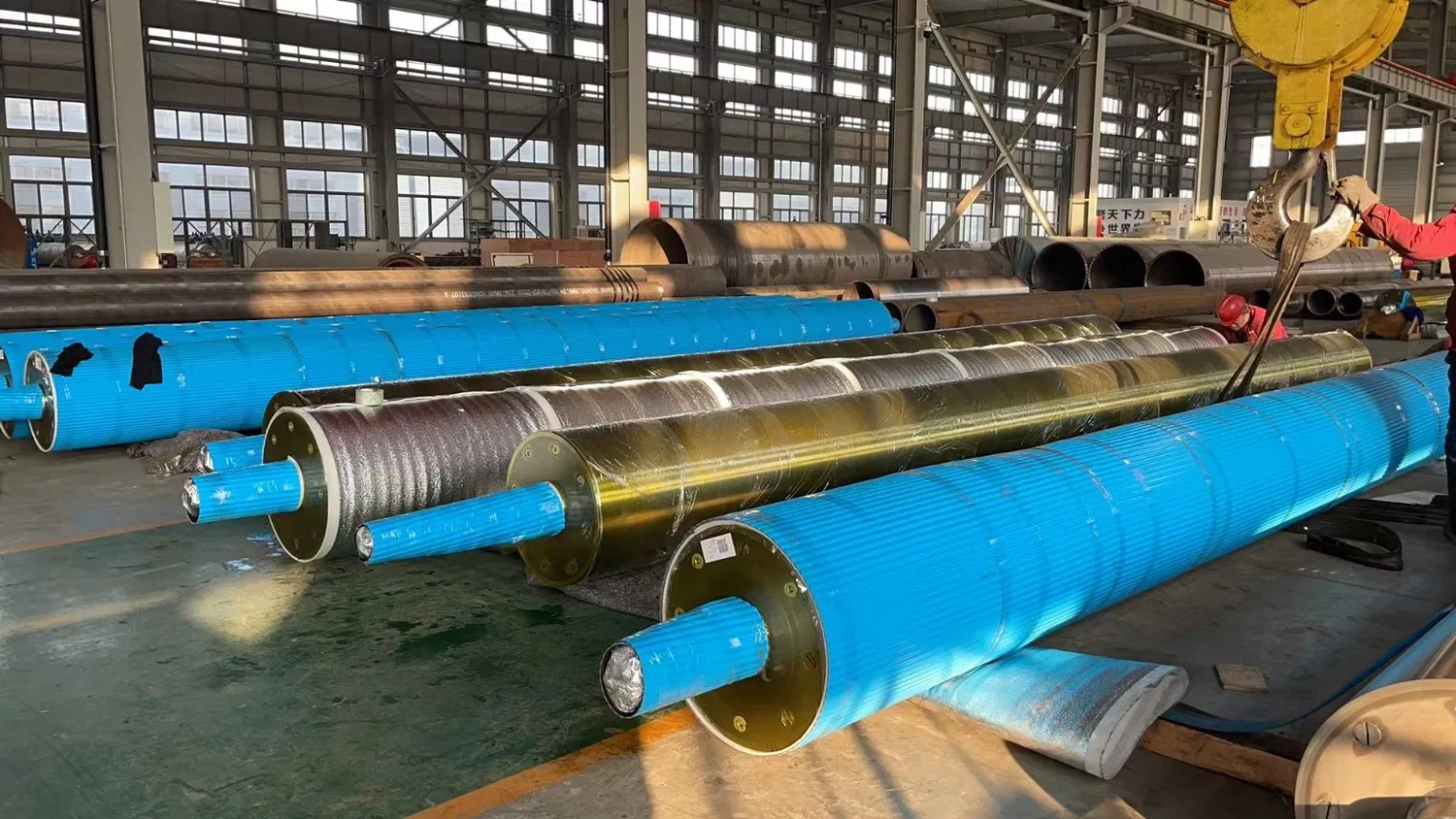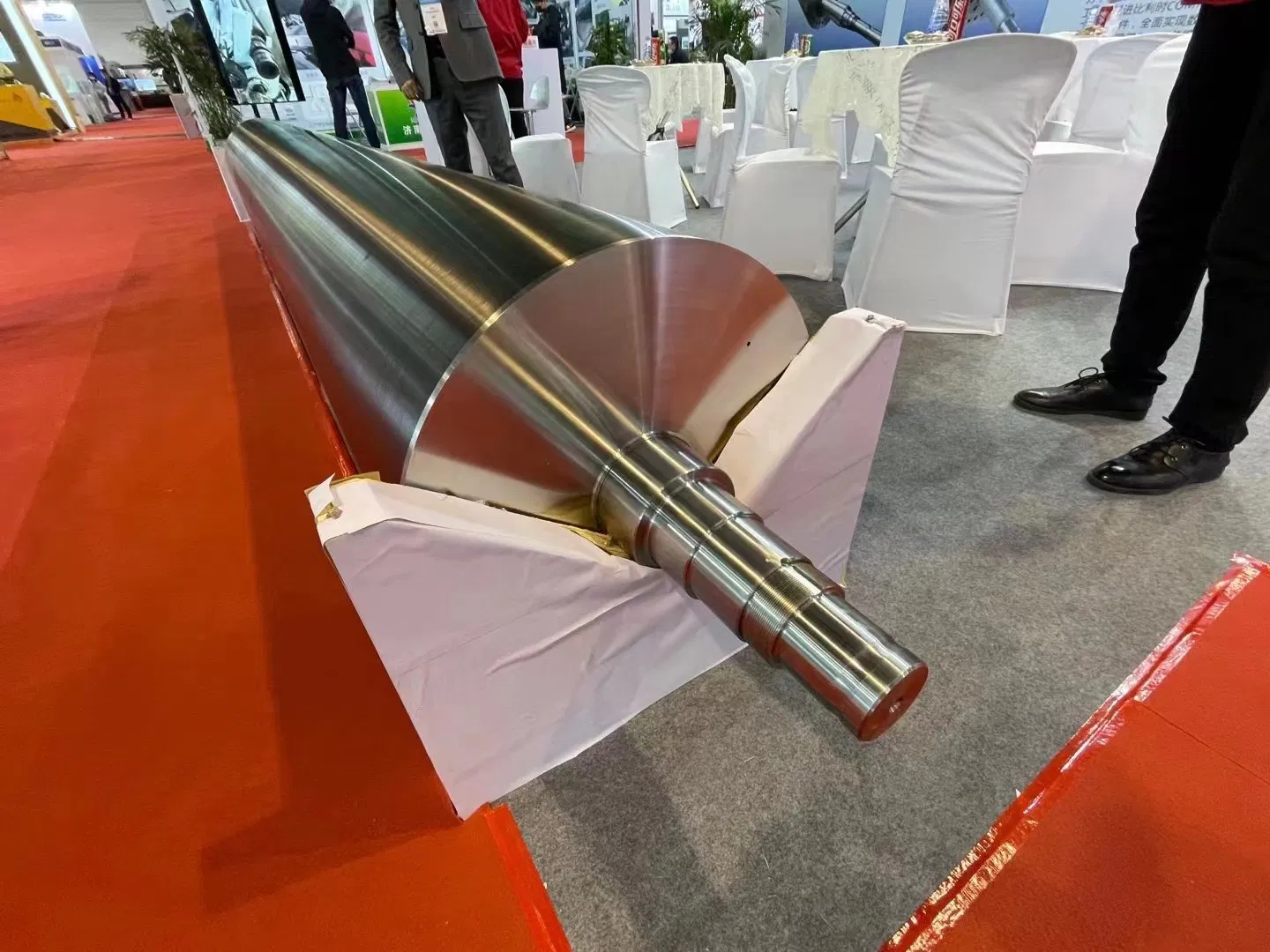Have you ever stopped to consider the intricate journey a sheet of paper takes from raw pulp to the finished product you hold in your hand? It's a marvel of modern engineering, powered by massive, complex paper machines that operate 24/7. These machines are not just single units; they are an amalgamation of thousands of precisely engineered parts, each playing a crucial role in the continuous process of papermaking. Frankly speaking, the efficiency, quality, and longevity of a paper mill hinge significantly on the reliability and performance of these individual components. This is precisely where a dedicated Paper machine components supplier becomes an indispensable partner in the global pulp and paper industry.
To be honest, the demand for paper products, despite the digital age, remains robust across various sectors, from packaging and hygiene to printing and specialty papers. This sustained demand places immense pressure on paper mills to maximize uptime, optimize production, and maintain stringent quality standards. Achieving these goals is impossible without access to high-quality, durable, and often custom-engineered parts. In my experience, the relationship between a paper mill and its chosen Paper machine components supplier is far more than a transactional one; it's a strategic partnership built on trust, technical expertise, and a shared commitment to operational excellence.
The Heartbeat of the Mill: Essential Paper Machine Components
A paper machine is a symphony of interconnected systems, each designed to transform a dilute fiber suspension into a continuous web of paper. Understanding the critical components involved helps appreciate the specialized knowledge a Paper machine components supplier must possess.
The Wet End: Forming and Pressing
The journey begins at the wet end. Here, the pulp slurry enters the headbox, which evenly distributes it onto a moving wire mesh or fabric. This is the forming section. Key components here include:
- Headbox Components: Internal baffles, slice lips, and distribution systems that ensure uniform fiber dispersion and sheet formation. Precision is paramount to avoid inconsistencies in the final paper.
- Forming Fabrics/Wires: These are highly specialized synthetic meshes that allow water to drain while retaining the fibers. Their design significantly impacts dewatering efficiency and sheet quality.
- Suction Boxes and Foils: Located beneath the forming fabric, these create vacuum or hydrodynamic forces to remove water from the nascent paper web.
- Press Rolls: Often massive, these rolls apply immense pressure to squeeze water out. They come in various materials, including granite, rubber-covered, and ceramic-coated, each chosen for specific properties like grip, wear resistance, and dewatering efficiency.
- Press Felts: These are specialized porous belts that absorb water from the paper web as it passes through the press nips. Their design and material composition are crucial for efficient dewatering and preventing sheet crushing.
The Dry End: Drying, Calendering, and Reeling
Once pressed, the paper web still contains a significant amount of water and needs to be thoroughly dried.
- Dryer Cylinders: These are large, steam-heated cast iron cylinders arranged in multiple sections. The paper web weaves its way over and under these cylinders, gradually drying as it progresses. Components like steam joints, siphons, and condensate removal systems are vital for efficient heat transfer.
- Dryer Felts/Screens: These hold the paper web against the dryer cylinders, ensuring maximum contact for efficient heat transfer and preventing fluttering.
- Calender Stacks: Consisting of a series of polished rolls, calenders smooth the paper surface, control thickness, and enhance gloss. Roll materials, heating systems, and nip pressure control are critical.
- Reelers: These machines precisely wind the paper web onto cores, forming jumbo rolls ready for further processing. Components include winding drums, rider rolls, and tension control systems.
Beyond these major sections, countless other industrial paper machine parts are essential: pumps, valves, bearings, gears, doctor blades, showers, rolls (guide rolls, spreader rolls, felt rolls), and sophisticated control systems. Each part must withstand extreme conditions – high temperatures, pressures, corrosive chemicals, and continuous operation – making material science and precision engineering non-negotiable.

The Indispensable Role of a Specialized Paper Machine Components Supplier
Given the complexity and capital intensity of paper machines, the role of a specialized Paper machine components supplier extends far beyond simply selling parts. They are strategic partners who contribute significantly to a mill's operational success and competitive edge.
Expertise and Technical Knowledge
A top-tier supplier doesn't just stock parts; they understand the entire papermaking process. They possess deep technical knowledge of material science, fluid dynamics, heat transfer, and mechanical engineering specific to paper machines. This expertise allows them to recommend the right component for a specific application, troubleshoot issues, and even suggest upgrades for improved performance. Many experts agree that this consultative approach is what truly differentiates a leading supplier.
Quality Assurance and Reliability
The failure of even a small component can bring an entire paper machine to a grinding halt, leading to significant production losses. Therefore, quality and reliability are paramount. Reputable pulp and paper equipment providers implement rigorous quality control measures, from raw material inspection to final product testing. They often adhere to international standards like ISO certifications, ensuring that every component meets stringent performance and durability requirements.
Inventory Management and Timely Delivery
Uptime is king in paper manufacturing. Mills cannot afford long downtimes waiting for replacement parts. A reliable supplier maintains a comprehensive inventory of standard components and has efficient logistics systems to ensure rapid delivery, often globally. This capability minimizes costly production interruptions and supports continuous operation.
Customization and Innovation
Every paper machine is unique, and sometimes, off-the-shelf solutions aren't sufficient. A premier Paper machine components supplier often has in-house engineering and manufacturing capabilities to produce custom paper mill components tailored to a mill's specific needs or to address unique operational challenges. They are also at the forefront of innovation, developing new materials, designs, and technologies that enhance machine performance, reduce energy consumption, and improve paper quality.
After-Sales Support and Service
The relationship doesn't end with a sale. Leading suppliers provide comprehensive after-sales support, including installation guidance, maintenance advice, troubleshooting, and repair services. This ongoing support ensures that components perform optimally throughout their lifecycle and helps mills maximize their investment.
Navigating the Market: Choosing the Right Paper Machine Components Supplier
Selecting the right supplier is a critical decision that can impact a mill's profitability and operational stability for years. It's worth noting that while price is always a factor, it should never be the sole determinant.
Experience and Reputation
Look for a supplier with a proven track record in the pulp and paper industry. How long have they been in business? What do their existing clients say about their products and services? A strong reputation is built on consistent quality, reliability, and customer satisfaction.
Product Range and Customization Capabilities
Does the supplier offer a comprehensive range of components for all sections of your paper machine? More importantly, do they have the engineering prowess to provide custom solutions when standard parts won't suffice? The ability to supply specialized custom paper mill components can be a significant advantage.
Quality Control and Certifications
Inquire about their quality assurance processes. Do they have ISO certifications or other industry-specific quality accreditations? Ask about their material sourcing and testing procedures. A transparent approach to quality indicates a commitment to excellence.
Technical Support and R&D
A supplier's technical support team should be knowledgeable and responsive. Do they offer engineering consultation, diagnostic services, or training? Furthermore, a supplier actively engaged in research and development is more likely to offer cutting-edge solutions that can improve your machine's performance and efficiency.
Logistics and Global Reach
Consider their supply chain capabilities. Can they deliver components quickly and reliably to your location, especially in emergency situations? A supplier with a robust global logistics network can significantly reduce downtime risks.
Value Proposition and Total Cost of Ownership
Frankly speaking, the cheapest component might end up being the most expensive due to premature failure, increased downtime, and reduced machine efficiency. Evaluate the total value proposition, considering not just the initial cost but also the component's lifespan, performance benefits, and the supplier's support services. A quality component from a reliable Paper machine components supplier often offers a lower total cost of ownership in the long run.

Innovation and Future Trends in Paper Machine Components
The pulp and paper industry is constantly evolving, driven by demands for higher efficiency, sustainability, and smarter operations. A forward-thinking Paper machine components supplier is not just a provider but an innovator, contributing to these advancements.
Smart Components and Digitalization
The integration of sensors and IoT (Internet of Things) into paper machine components is a growing trend. These "smart" components can monitor their own performance, temperature, vibration, and wear in real-time, feeding data back to a central system. This enables predictive maintenance, allowing mills to replace parts before they fail, thereby minimizing unplanned downtime. Suppliers are developing components with embedded intelligence, offering mills unprecedented insights into their operations.
Sustainable Materials and Energy Efficiency
With increasing environmental awareness, there's a push for more sustainable papermaking processes. This translates to components designed for reduced energy consumption, longer lifespan (reducing waste), and potentially made from more eco-friendly materials. Suppliers are investing in R&D to create components that contribute to a smaller carbon footprint for paper mills.
Advanced Manufacturing Techniques
Techniques like additive manufacturing (3D printing) are starting to influence component design and production, allowing for more complex geometries, lighter parts, and rapid prototyping of specialized custom paper mill components. This can lead to improved performance and faster turnaround times for unique needs.
Interestingly enough, the future of paper manufacturing will be heavily influenced by these technological advancements, and a proactive Paper machine components supplier will be at the forefront, offering solutions that help mills adapt and thrive in a changing landscape.

Conclusion: The Backbone of Papermaking Excellence
In essence, the intricate world of paper manufacturing relies heavily on the quality and performance of its countless components. From the forming section to the reel, each part plays a non-negotiable role in the continuous, high-speed production of paper. The importance of a reliable, knowledgeable, and innovative Paper machine components supplier cannot be overstated. They are not merely vendors; they are strategic partners who provide the very backbone of a mill's operational success, ensuring efficiency, minimizing downtime, and contributing to the overall quality of the final paper product. Choosing the right supplier is an investment in the future, guaranteeing that your paper machine continues to run smoothly, efficiently, and profitably for years to come.
For more detailed information, please visit our official website:Paper machine components supplier
About the author: Dr. Evelyn Reed is a seasoned industrial engineer with over two decades of experience specializing in pulp and paper manufacturing processes and machinery. Her expertise lies in optimizing operational efficiency through advanced component selection and maintenance strategies. She frequently consults with leading paper mills globally, advising on everything from material science to predictive maintenance for complex paper machine systems.


